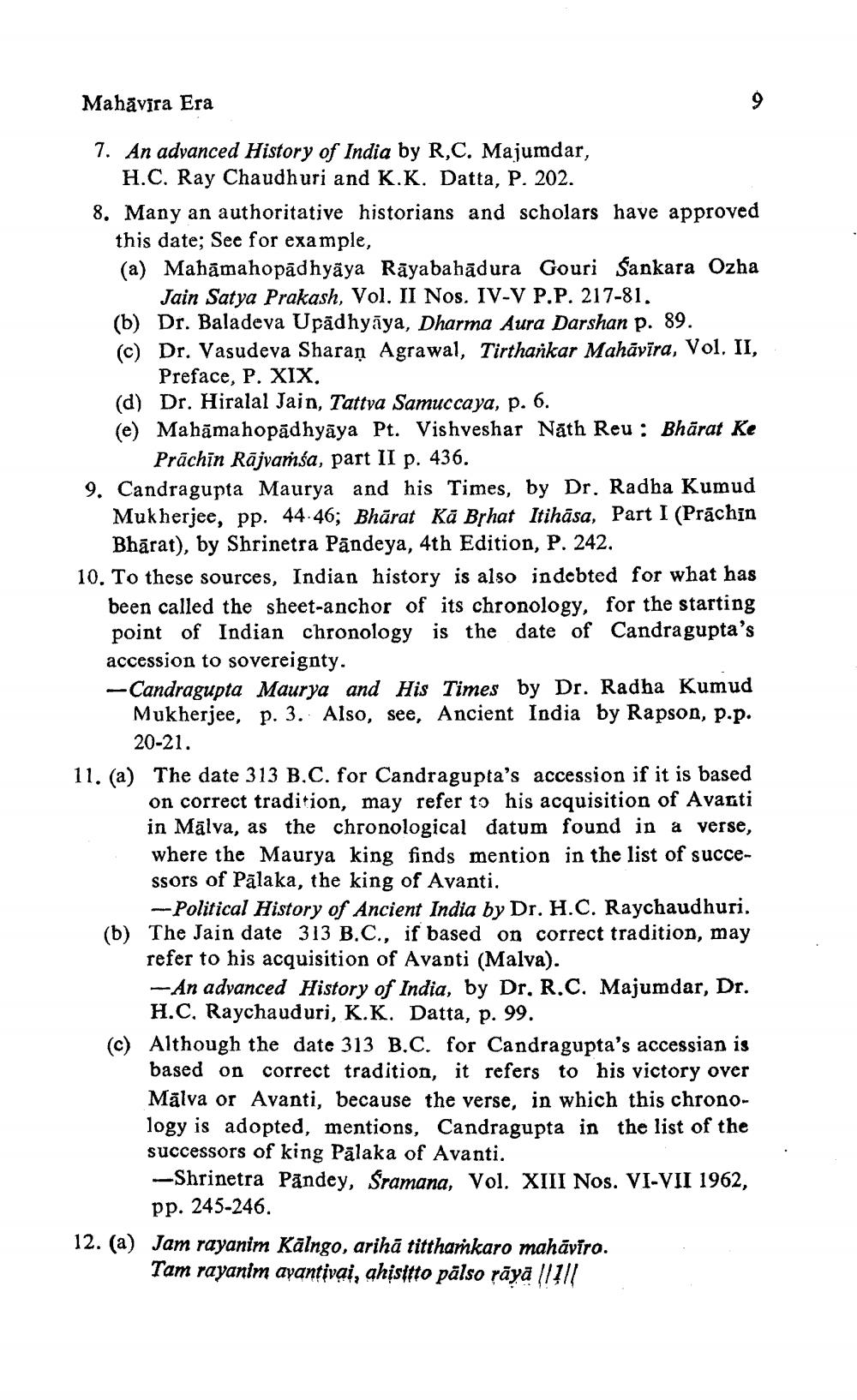________________
Mahāvīra Era
7. An advanced History of India by R,C. Majumdar,
H.C. Ray Chaudhuri and K.K. Datta, P. 202. 8. Many an authoritative historians and scholars have approved this date; See for example, (a) Mahāmahopadhyāya Rayabahādura Gouri Sankara Ozha
Jain Satya Prakash, Vol. II Nos. IV-V P.P. 217-81. (b) Dr. Baladeva Upādhyāya, Dharma Aura Darshan p. 89. (c) Dr. Vasudeva Sharan Agrawal, Tirthankar Mahāvīra, Vol. II,
Preface, P. XIX. (d) Dr. Hiralal Jain, Tattva Samuccaya, p. 6. (e) Mahāma hopadhyāya Pt. Vishveshar Nath Reu: Bhārat Ke
Prāchin Rājvaṁśa, part II p. 436. 9. Candragupta Maurya and his Times, by Dr. Radha Kumud
Mukherjee, pp. 44.46; Bhārat Kā Brhat Itihāsa, Part I (Prāchin
Bhārat), by Shrinetra Pāndeya, 4th Edition, P. 242. 10. To these sources, Indian history is also indebted for what has
been called the sheet-anchor of its chronology, for the starting point of Indian chronology is the date of Candragupta's accession to sovereignty. -Candragupta Maurya and His Times by Dr. Radha Kumud Mukherjee, p. 3. Also, see, Ancient India by Rapson, P.p.
20-21. 11. (a) The date 313 B.C. for Candragupta's accession if it is based
on correct tradition. may refer to his acquisition of Avanti in Mälva, as the chronological datum found in a verse, where the Maurya king finds mention in the list of successors of Pālaka, the king of Avanti.
-Political History of Ancient India by Dr. H.C. Raychaudhuri. (b) The Jain date 313 B.C., if based on correct tradition, may
refer to his acquisition of Avanti (Malva). -An advanced History of India, by Dr. R.C. Majumdar, Dr.
H.C, Raychauduri, K.K. Datta, p. 99. (c) Although the date 313 B.C. for Candragupta's accessian is
based on correct tradition, it refers to his victory over Mālva or Avanti, because the verse, in which this chronology is adopted, mentions, Candragupta in the list of the successors of king Palaka of Avanti. --Shrinetra Pandey, śramana, Vol. XIII Nos. VI-VII 1962,
pp. 245-246. 12. (a) Jam rayanim Kālngo, arihā titthamkaro mahāviro.
Tam rayanim ayantivai, ghisitto pälso rāya |11||




